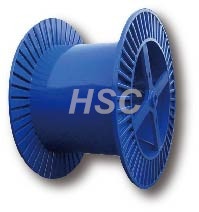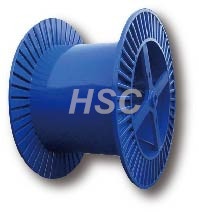A cable reeling drum is a round object shaped like a reel that is used to carry cables and wires. cable reeling drums are used for installation, upgrades and replacement. Improper handling of the cable reeling drum during transport and use can result in damage to the cartridge, or more dangerously, invisible damage to the cable itself can render it completely unusable. Therefore, it is critical to safeguard the cable reeling drum.

1. Distinguish the type.
The four types of cable reeling drums are wood, plywood, plastic and steel. Wooden cable reeling drums are the oldest, while steel cable reeling drums have seen a significant increase in use in recent years.
In terms of durability, steel drums take precedence for their environmental friendliness and versatile features. They are used for light or heavy cable loads. Many companies and industries prefer traditional wooden drums because of their great load flexibility. However, the offshore import/export industry mostly uses steel coils because they are difficult to steal and can be stored for longer periods of time.
Thanks to a new and innovative approach, wooden barrels can now withstand steel wear and tear, thus increasing their application. Typically, they are used for heavy-duty one-way trips and converted to furniture after achieving their purpose.
As for plastic and plywood spools, they are mainly used for lighter loads. Plywood cable reeling drums are made of poplar or birch ply material and are known for their strength and viability. Plastic cable reeling drums are made from recycled plastic and are therefore environmentally friendly.
2. cable reeling drum handling.
Manufacturers must follow strict guidelines when transporting cable reeling drums in order to prevent them from being damaged. For example, load weights should be carefully considered depending on the type of cable reeling drum used, and cable reeling drums should be sufficiently strapped to counteract rolling and remain secured to the plain during transport.
(1) Always check the condition of the cable reeling drum. For example, the slats of the drum should be kept intact to avoid exposing the cable to high temperatures. The cable reeling drum must be checked for complete closure to protect the cable. Constant evaluation should be performed to prevent damage. Loosening the cable from a damaged reel should be replaced with an undamaged reel.
(2) The cable reeling drum should be kept upright at all times.
(3) When handling cable reeling drums, small but critical steps should always be completed, such as tightening nuts, removing fixtures before threading, and placing them on a flat surface.
(4) There are different types of cables. Depending on the type of cable, the temperature should be continuously maintained to get the best results through the cable and to keep it in good condition.
(5) Do not drop the cable reeling drum under any circumstances.
(6) Tidy the cable only in the direction of the unwinding line (usually clockwise).
(7) Place the electro-linked reel on a dry hard floor in the room.
(8) To store cable reeling drums for long periods of time, tie them in place with railroad ties.
Compliance with these conditions ensures the safety of the cable and facilitates reuse of the cable reeling drum.
The above is the knowledge about how to ensure that the cable reeling drum will not be damaged during transportation and use, if you need more detailed information, welcome to contact us!
